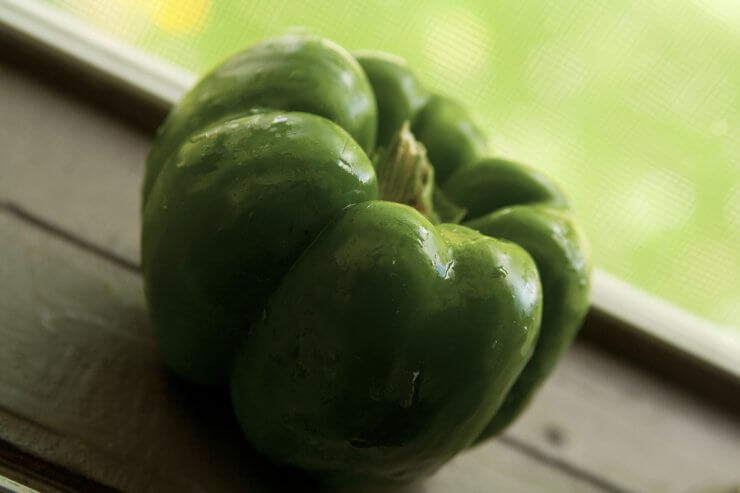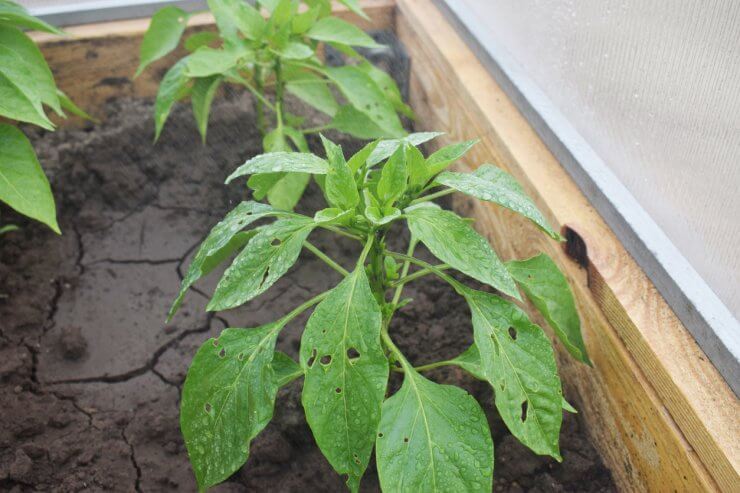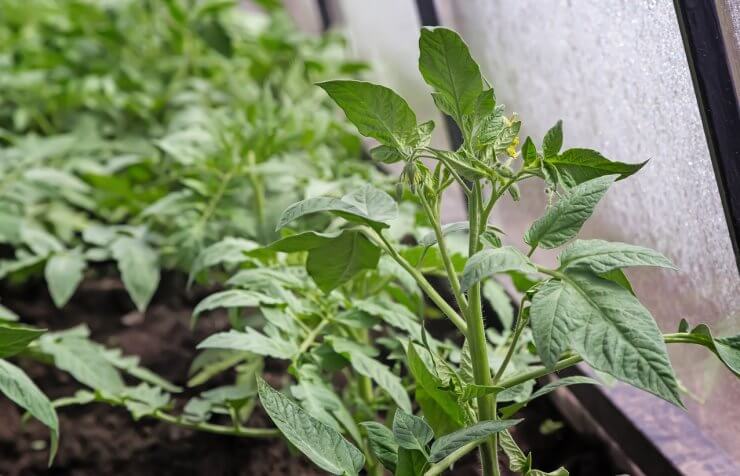
Bell peppers aren’t supposed to survive winter. At least, that’s what Big Gardening wants you to believe. But here’s the botanical bombshell that’ll reshape your entire pepper worldview: those “annual” bell peppers are actually perennial plants in disguise, just waiting for someone brave enough to crack the overwintering code.
Spoiler alert: You can absolutely overwinter bell pepper plants, and the results are spectacular enough to make your neighbors question their entire gardening philosophy.
The Perennial Pepper Conspiracy
Bell peppers (Capsicum annuum) have been pulling the wool over our gardening eyes for decades. In their native Central and South American habitats, these plants live for years, growing into substantial pepper-producing powerhouses. The only reason we treat them as annuals is because frost turns them into vegetable popsicles.
But what if I told you that with the right approach, you could keep your pepper plants alive indefinitely? What if those expensive pepper seedlings you buy every spring could become multi-year investments? What if you could have peppers ready to harvest by June instead of August?
Welcome to the underground world of pepper overwintering, where plant nerds gather to discuss dormancy strategies and LED light spectrums with the intensity of fantasy football leagues.
The Science Behind Pepper Survival Mode
When temperatures drop, bell peppers don’t actually want to die – they want to hibernate. In botanical terms, they enter a state called dormancy, where they shut down non-essential functions and conserve energy for future growing seasons.
Research from agricultural universities shows that overwintered pepper plants can produce fruit 4–6 weeks earlier than freshly planted seedlings, with root systems up to 300% larger than first-year plants. The yield differences are staggering – we’re talking about plants that can produce peppers well into November instead of giving up at the first frost.
The key lies in understanding pepper physiology: these plants store energy in their root systems during dormancy, creating botanical batteries that power explosive spring growth.

The Great Indoor Migration: Tactical Pepper Extraction
Timing Your Pepper Prison Break
The window for successful pepper evacuation is precise: when nighttime temperatures consistently hit 50°F (10°C) but before frost arrives. In Massachusetts where I live, this typically falls between mid-October and early November, depending on whether Mother Nature decides to play nice or throw a meteorological tantrum.
Missing this window is like showing up to a flash sale after all the good stuff is gone – technically possible, but significantly more disappointing.
The Root System Reality Check
If your peppers are planted in the ground, excavation requires surgical precision. The root system extends roughly as wide as the plant is tall, so plan accordingly. Container plants get a free pass on this particular trauma, which is why smart pepper parents start with pots.
Pro tip: Use a sharp spade to cut a circle around the plant about 12 inches from the stem, then dig straight down to preserve as much root mass as possible. Yes, you’ll sacrifice some roots, but peppers are surprisingly resilient to root disturbance.
The Controversial Pruning Debate
Here’s where pepper overwintering gets spicy: to prune or not to prune? The scientific consensus favors aggressive pruning – cutting plants back by 30–50% reduces transpiration stress and helps them transition to dormancy.
I know it feels barbaric, but those beautiful pepper-laden branches are energy vampires during dormancy. Cut them back, save the peppers for cooking, and trust the process.
Indoor Pepper Life Support Systems
Light: The Non-Negotiable Requirement
Bell peppers need approximately 2,000–3,000 foot-candles of light to maintain basic metabolic functions during winter. For reference, most homes provide about 100–200 foot-candles near windows. The math is brutal.
LED grow lights are your salvation here. Full-spectrum LEDs positioned 12–18 inches above plants, running 12–14 hours daily, can maintain pepper plants in dormancy while preparing them for spring explosions. Expect to spend $50–150 on decent lighting setups, but consider it tuition for Advanced Pepper Parenting.
The light spectrum matters too – blue light (400–500nm) promotes vegetative growth, while red light (600–700nm) encourages flowering. During dormancy, you want more blue than red to maintain foliage without triggering premature flowering.
Temperature: The Goldilocks Zone
Peppers demand temperatures between 65–75°F during the day, dropping to no less than 60°F at night. They’re basically horticultural divas with very specific comfort requirements.
Temperatures below 50°F trigger cellular damage, while temperatures above 80°F stress dormant plants unnecessarily. Consistency matters more than perfection – a steady 68°F beats wild temperature swings.
Humidity: The Invisible Challenge
Winter indoor air typically hovers around 20–30% humidity, while peppers prefer 40–50%. This difference might seem minor, but it’s the equivalent of asking a fish to live in the Sahara.
Humidity solutions range from sophisticated (whole-house humidifiers) to ridiculous (surrounding plants with bowls of water like some sort of pepper shrine). Pebble trays filled with water work well – place pots on top of gravel-filled trays with water just below the gravel surface.

The Dormancy Dance: What to Expect
The Great Leaf Apocalypse
Don’t panic when your pepper plants start dropping leaves like autumn trees. This is completely normal dormancy behavior – plants are essentially shutting down unnecessary systems to conserve energy.
Healthy dormant peppers typically retain 20–40% of their original foliage. Complete defoliation might indicate stress, but isn’t necessarily fatal. Peppers can regrow from seemingly bare stems when conditions improve.
Watering: The Overprotective Parent Trap
Dormant peppers need water about as frequently as succulents – which is to say, not very often. Water only when the top 2 inches of soil feel dry, and water thoroughly but infrequently.
Overwatering dormant peppers is the fastest way to turn your overwintering experiment into a lesson about root rot. The roots are barely active, so excess water just sits around causing problems.
The Pest Invasion Problem
Indoor conditions create superhighways for spider mites, whiteflies, and aphids. These pests view your pepper sanctuary as an all-you-can-eat buffet with no natural predators.
Weekly inspections are crucial. Check leaf undersides, stem joints, and soil surfaces. Insecticidal soap works well for minor infestations, while neem oil handles heavier pest pressure.
The Spring Resurrection Protocol
Come March or April, dormant peppers begin showing signs of life: new leaf buds, fresh growth, and renewed interest in pepper production. This is when the overwintering payoff becomes obvious.
Gradually increase watering frequency and begin fertilizing with diluted liquid fertilizer. The established root systems respond dramatically to improved conditions, often doubling in size within weeks.
The Reverse Hardening Process
Transitioning overwintered peppers back outdoors requires the same gradual approach used in fall, but in reverse. Start with a few hours of outdoor exposure, gradually increasing duration over 7–10 days.
Overwintered plants often show cold tolerance improvements, handling temperatures that would have stressed first-year plants.

What Victory Looks Like
Successful pepper overwintering produces plants that leaf out earlier, flower sooner, and produce peppers 4–6 weeks ahead of fresh seedlings. Root systems develop dramatically, creating plants capable of supporting larger pepper loads.
Expect 70–80% survival rates for first-time overwinterers, improving to 90%+ with experience. Plant losses usually occur from overwatering or inadequate lighting rather than inherent technique failures.
Overwintering peppers isn’t for casual gardeners. It requires equipment, dedication, and tolerance for plant-related stress. You’ll spend winter evenings adjusting grow lights, monitoring soil moisture, and questioning whether this hobby has gotten out of hand.
But for gardeners ready to level up their pepper game, overwintering delivers results that justify the effort. Earlier harvests, bigger plants, and the ultimate gardening bragging rights await those brave enough to keep peppers alive through winter.
The choice is yours: accept the annual pepper cycle like everyone else, or join the ranks of pepper overwintering rebels who refuse to let winter win.
Your future pepper harvests are counting on you!
Want to learn more about growing bell peppers? Check out our Bell Peppers Gardening Guide! When grown to full ripeness, you can enjoy a rainbow of peppers—from creamy white to deep purple! Bell peppers need lots of warm sunshine to thrive, and there are varieties that will produce prolifically in containers. Learn what it takes to add bell peppers to your garden plan.


 Previous
Previous

